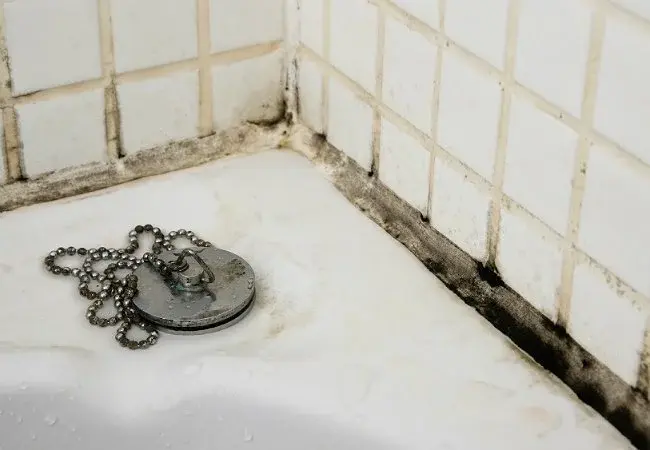7 DESIGN STRATEGIES TO AVOID MOLD FORMATION & IMPROVE THE HEALTH OF YOUR HOME
- valecere
- Oct 6, 2023
- 3 min read
Moisture and mold formation are one of the most widespread health issues of our modern buildings, especially in hot and humid climates like the Middle East region.
We have been inspecting homes in the region for the past 6 years, and among the hundreds homes only one or two did not have a mold problem.

We think this is a very serious issue that should be addressed at a national level through the implementation of mold preventive measures within the architectural code, to guide developers in following design strategies and appropriate materials for construction and interiors, to prevent the formation of mold bacteria.
Meanwhile, we hope our article helps home owners and companies to create healthier environments.
WHAT IS MOLD?
Fungi (mold) are one of the main five kingdoms of creatures on the planet, over 25% of the Earth’s biomass is fungi. The indoor mycoflora (fungal species mix) is made of three species : Ascomycetes, Basidiomycetes and Zygomycetes. These appear during damp indoor conditions. When indoor conditions present high moisture, molds can germinate and release enzymes.
The enzymes break down the cellulose-based building materials so that the starches and sugars are absorbed, their favourite nutrient.
WHAT HEALTH ISSUES ARE ASSOCIATED WITH MOLD?
Mold use mycotoxins to protect their nutrient supply. These can be neurotoxins or immune-suppressors and can interfere with life processes.
The term Non-Specific Building related Illness (NSBRI) is a term that highlights the challenges of direct association of a specific illness with a specific source, such as mold and bacterias.
Most of the below symptoms are associated with mold exposure:
-Airflow obstruction in healthy person
-Mucous membrane irritation symptoms
-Lower respiratory illness in healthy person
-Skin symptoms -Fatigue
“Symptoms caused by mold allergy are watery, itchy eyes, chronic cough, headaches or migraines, difficulty breathing, rashes, tiredness, sinus problems, nasal blockage and frequent sneezing,” said Dr Al Zarouni (as referenced in The National News article of Abu Dhabi).
COMMON DESIGN MISTAKES & 7 SOLUTIONS
1) The use of gypsum panels for false ceilings in all areas (wet and non wet) is the main cause of mold formation in our buildings: moisture and condensation forming inside the ceilings in contact with dust creates mold.
The solution is to use waterproof false ceilings throughout and possible without paper (only gypsum).

Mold growth on gypsum ceiling (not waterproof)
2) All air conditioning ducts and ceilings should be accessible for mantainance and cleaning. In climates like Dubai, the false ceilings, AC ducts, fan coil units should be cleaned once a year to remove dust and possible mold. The design of the access to all services should be planned during the design stage of the ceilings.
3) An aluminum dripping pan should be placed under all sinks pipes in case of water dripping, which is very common and mostly unnoticed by the family living in the building. This will protect the MDF/wooden cupboard which otherwise would form mold by time.
4) Avoid the use of wallpapers in wet areas, including guest bathrooms, and on walls that are adjacent to bathrooms/kitchens or external walls. Humidity gets easily trapped in between the wallpaper and wall forming mold very quickly.
99% of the homes with wallpapers we have inspected were found with mold growth.

Wallpaper with mold growth.
5) Get a humidity meter for all rooms to check the humidity levels which should always be between 40-50%. Higher humidity is not only very unhealthy, but also will create mold on curtains and even behind artworks.
6) In the bathrooms avoid the use of grout in niches / shower nooks as water collects and stagnates in this areas creating mold in the grout. The shower should be always kept dried, hence creating the habit of drying your shower floor and walls after use is ideal.

Mold formation on grout in area where water stagnates and it is not kept dry.
7) When designing wooden cabinets below the bathrooms sinks, make sure to apply ceramic tiles in between the back of the cabinet and wall, and use E1 water proof MDF to reduce the risk of mold formation. Wooden cabinets in direct contact with concrete walls in humid area easily create mold.
The cabinet should also be suspended from the floor by 20-30 cm to avoid moisture formation and mold between the bottom of the cabinet and the floor.

Image showing mold formation at the back of the cabinet due to moisture in between wooden panel and wall.
Contact us for any questions and clarifications.
Energy & Space Team.




This is an excellent guide highlighting how design strategies can prevent mold formation and improve home health. The seven practical solutions, from waterproof ceilings to proper cabinet installation and humidity monitoring, provide actionable steps for homeowners and builders alike. It clearly shows that thoughtful design and maintenance are key to creating a safer, mold-free living environment.